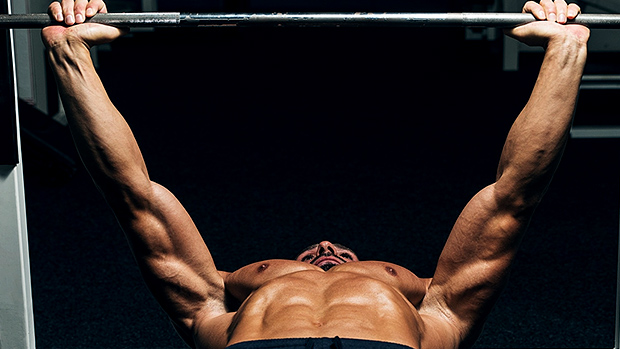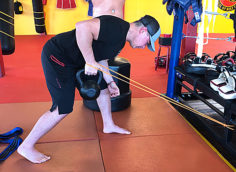The Right Way
Anchor the band at elbow height and do a face-away curl while holding a dumbbell. Make sure you keep your biceps by your side throughout each rep. Keep your elbow from moving in front of or behind your torso.
The band is set up to create tension at the bottom portion of the rep. This portion is what gets missed by the standard dumbbell curl, which creates the most tension on your biceps at the mid to top of the range of motion.
The nice thing about using the NT Loop band for this is its fabric design makes it easier to hold in your hand while you also grip the dumbbell. And, it also allows your forearm to travel between the band to keep a smooth, controlled range of motion. A different type of band will rub against your arm or flip around your arm and make each rep feel awkward.
Now, I've seen some people try to create this same effect by doing a preacher curl with a single dumbbell while also holding a band that's anchored in-front of them.
Mechanically this setup makes sense because the band creates tension at the top of each curl where you don't get tension from the preacher curl. However, I don't recommend this setup because it's an accident waiting to happen. It violates the number one rule of resistance band exercise safety: never pull a band toward your face.
Latex resistance bands pose a unique threat because they can strike you in the face, causing serious (possibly blinding) eye damage. A Google search results in hospital data providing a long list of eye injuries caused by resistance bands (1) along with numerous legal firms, safety commissions, and eye surgeons talking about serious face and eye injuries. Despite the overwhelming number of documented incidents, this reality is completely overlooked by the majority of lifters, trainers, and physiotherapists.
That said, you can get a more effective range of motion out of a curl when using a band anchored behind you. The face-away variation provides all the benefits and none of the risks you'd get from anchoring it in front of you. My version also doesn't require the need for the additional preacher bench or incline bench.
Now, before you say "just don't over-stretch the band" consider this:
The risk of a band snapping is further increased when you consider the way many gyms store their bands. It basically violates the storage and maintenance guidelines. The band you may be tempted to use in a risky manner has likely been abused beforehand.
If it's been stored in heat or direct sunlight, kept in a cold environment, had knots tied in it, was cleaned with abrasive products, has been misused by other patrons, or if it's just plain old, then it's not super safe to use, let alone to pull toward your pretty face.
T Nation earns from qualifying purchases as an Amazon Associate. Read more about our policy.




